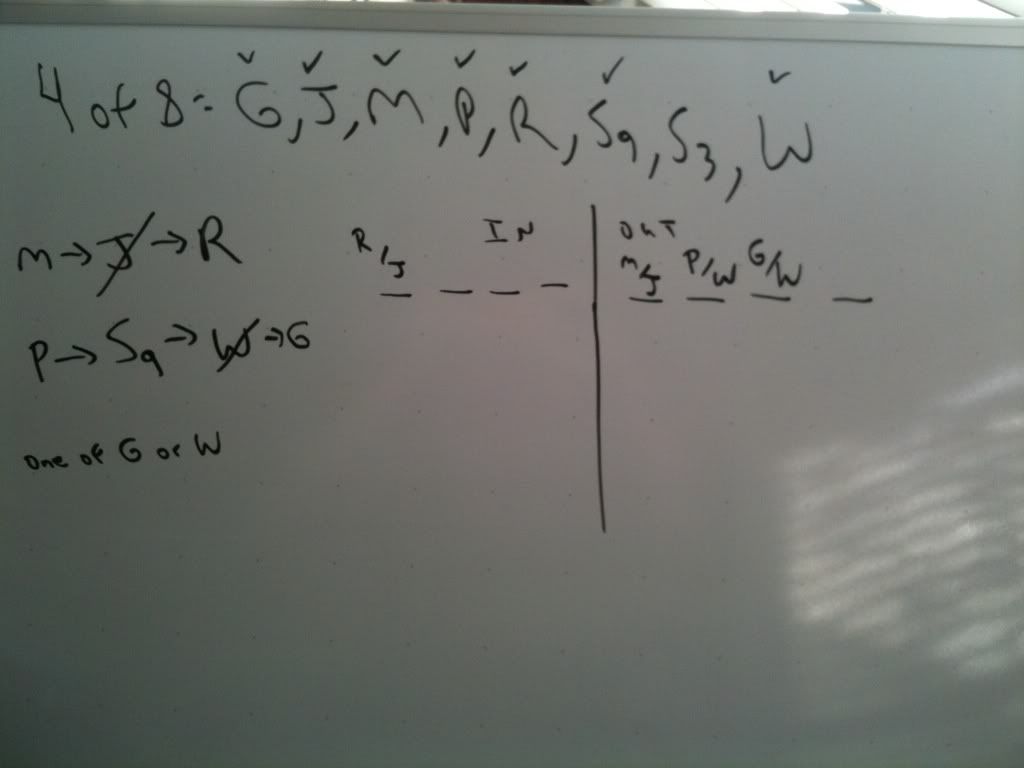Post
by secretad » Sat Mar 26, 2011 12:18 pm
I have been to the forum and I use quite often and it has been of great value to me. However, I am a little perplexed as to why this game is giving me fits. I have redone it over and over and continue to struggle.
Some basic questions. I am converting the 7 courses with S going at either 9am or 3pm as two distinct variables to give me 8 total variables. Four in the selected column and four in the not selected column.
Usually the best deductions to be made on the in-out games as I have been taught is to discover which variables must go out or in. Such as in this case, when you have a conditional like if m -> then not j, you know that at least one of those two variables must be placed in the out column, and you can create a dual option in one of the four spaces in the out column bearing in mind that both variables could be out.
Same thought process with a conditional like if not j->then r. At least one of those variables must be placed in the selected column with a possibility that both can be in.
However, in this in-out game, those deductions did nothing but slow the game down and added no fire power. I then looked at manhattans website of how they did the game, and the framing idea also did nothing but slow me down. As it is of great help when g is out, but some of the questions in the game would only give a list of three in, thus you not knowing for certainty that g is out.
The logic chain that manhattan uses is different than what I have learned, which was at testmasters.
My version of the logic chain is when you connect all of the incommon variables to construct a long chain. The thing that is on the .pdf of the website is way too involved and not a lot of help.
Can I receive some help on this game? I know it is painstaking but I would greatly appreciate it if anybody else is prepping for the June test and wanted to do some extra practice.

